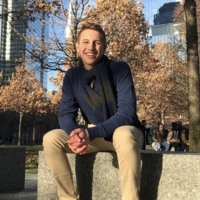Antimicrobial Peptide LL-37 Activates Mast Cells Independent of MrgprB2
This past summer, I worked in the Department of Basic and Translational Sciences in the University of Pennsylvania's School of Dental Medicine under the supervision of Dr. Hydar Ali. This project focused on a specific receptor found in mast cells named the MRGPRX2 receptor, and it entailed understanding and experimenting with it. Since I have been in a biological lab before, many of the machines and instruments in the lab were familiar to me. However, the actual experiments I conducted throughout the summer were new to me, and I am incredibly grateful that the lab had detailed protocols and extraordinary lab members who helped me.
From the start of the program, I quickly realized some of the central tenets of biological research: experiments don't usually work the first time, and they take time to come to fruition. With this in mind, I made sure to design experiments carefully and run them to the best of my ability. The first experiment that I learned in the lab was the β-Hexosaminidase assay, which measured the degranulation of the mast cells. Soon enough, I learned and conducted other experiments that measured different properties of mast cells, including enzyme-linked immunosorbent assays (ELISA), calcium mobilization assays, and lastly, immunohistochemistry. Moreover, I also looked after and maintained eight batches of mast cells: 4 sets of lung mast cells and four sets of bone marrow mast cells (with the help of graduate students). After conducting each of these assays, Dr. Ali and the graduate and postdoctoral researchers decided that I should focus on β-Hexosaminidase assays. The most important studies that I conducted with various mast cell types were measuring the rate of β-Hexosaminidase release with many different ligands and measuring β-Hexosaminidase release when an inhibitor was added. All the degranulation assays were conducted multiple times to ensure similar and uniform results.
Throughout the ten weeks I worked in the lab, I found new techniques and ways to approach the experiments so they wouldn't feel redundant. As well, one of my favorite parts of the experience was being able to communicate and interact on a personal level with postdoctoral and graduate students who each, in their own ways, taught me something important about academia and research. Overall, the biggest takeaway from this program is that experiments and research are not always straightforward. It involves complex reasoning and design that can't be done in a short amount of time. Through this experience, my biological research knowledge increased tremendously, and I am extremely appreciative of this opportunity.

Comments